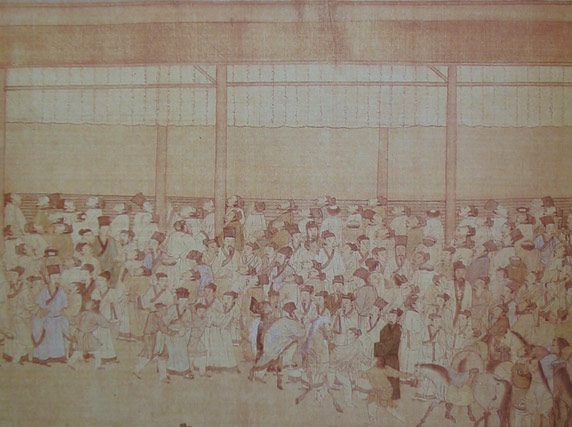“Do I have to go? I think I can do well on the test!”
Number One Son didn’t want to go to test prep course that The Wife and I were planning for him. He’s in the 8th grade and wants to go to Bellarmine College Prep, one of the local Catholic high schools in Silicon Valley. To get in, he needs to take the High School Placement Test (HSPT), and we wanted to put him in a test prep course, just like we did with his older sister. You might think, “you’re putting your kid in a test prep course for getting into high school? No wonder Asians-American were the only ethnic group in the class of 2010 who increased their SAT scores. What’s with you Asians and testing?”
If you thought that, you wouldn’t be alone. A New York Timers blogger recently mused about testing in Asian schools. When her children were in a school in China, she found it unusual that they were regularly tested even at a young age, with math tests twice a week and regular spelling tests, and results were “elaborately graphed. “ The fact that Asian-Americans increased their SAT scores has been used by some to bash other ethnic groups.
Testing has long been a part of Asian history and culture, with the Chinese originating the Civil Service Exam in the Sui dynasty as a way to bring meritocracy into their government bureaucracy. In a number of Asian counties like China and Korea, exams are the sole determinant whether you get into college or not. Some American educators dislike the idea testing young children and standardized tests in general, arguing that such testing kills creativity and turns school into test prep academies. I won’t disagree that testing can go too far, but my children’s primary school did regular testing, and I found that it really helped my kids focus and learn. “Research has long shown that more frequent testing is beneficial to kids, but educators have resisted this finding,” said Gregory J. Cizek, a professor of educational measurement and evaluation at the University of North Carolina at Chapel Hill. He adds that the prevailing philosophy of offering young children unconditional praise and support was probably not the best prescription for successful education.
Culture, while a factor, isn’t the only reason that this year’s class of Asian-American’s increased their SAT scores, One factor, discussed here in “Inside Higher Ed”, is the continued and strong correlation between higher income and SAT scores. While we have pointed out that while there is wide variation in income, Asian-Americans do have high median income relative to other ethnic groups. Two others factors I’ll propose are speculative, but I think may have some validity. First, as public universities like the University of California (UC) reduce enrollment in the face of budget cuts, admission gets more competitive. Combined with the fact that UC is eliminating SAT subjects tests as admission critieria, the SAT becomes more important, increasing the pressure to do well. A final factor may be the perception that elite universities put a cap on the number of Asian-Americans admitted, Asian-American parents may perceive that their children have to do better in order to get in, and hence push things like test prep courses.
It may seem hard to believe, but getting into some of the local private high schools is also incredibly competitive in a way similar to getting into college. Like the SAT, the HSPT is a big factor in admissions. So whether he likes it or not, Number One Son is going to a test prep class.





